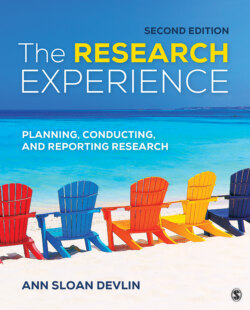Читать книгу The Research Experience - Ann Sloan Devlin - Страница 82
File Drawer Phenomenon
ОглавлениеEarlier we talked about the difficulty in having an article accepted for publication, with one of the basic criteria being research where the null hypothesis has been rejected. Not all research works out, and then it may be “filed away.” This problem with nonsignificant results being filed away contributes to what is known as the file drawer phenomenon or effect, a term introduced by Robert Rosenthal in 1979 in his article “The ‘File Drawer Problem’ and Tolerance for Null Results.” This problem is a form of publication bias, in which nonsignificant results do not contribute to the body of knowledge about a particular issue and are therefore not published. When this happens, particular findings appear to be more robust or reliable than in fact they are, given the unpublished data that remain “in the drawer,” so to speak.
File drawer phenomenon or effect: Form of publication bias in which research appears more reliable than it is because articles on the topic that have not rejected the null hypothesis have not been published.
At the other end of the file drawer spectrum, a problem may occur when data produce significant results unwanted by the researcher (e.g., supporting the work of another theorist). If this researcher then decides to “file” the data, the case is problematic. Not only do we have less information about a research topic, but there is also a kind of academic dishonesty in not sharing significant findings inconsistent with one’s predictions or theoretical model.
